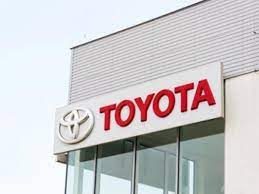RBI’s Mandatory ‘Key Facts Statement’ Means Retail Borrowers Won’t Have Any More Hidden Loan Fees
Starting on October 1, 2024, banks and non-banking financial institutions (NBFCs) will provide key facts statements (KFS) to retail loan customers, enabling them to better understand the true cost of their loan.

A order was released on Monday by the Reserve Bank of India (RBI) that forbids banks and other regulated businesses from charging extra for loans that aren’t previously mentioned in the Key Fact Statement (KFS). The announcement mandates that all new retail and MSME term loans approved after October 1st, including loans to current clients, must conform to these requirements.
The regulator said, “At any point during the loan term, the REs may not charge the borrower any fees, charges, etc. that are not specified in the KFS without the borrower’s express consent.”
In order to execute the aforementioned rules as soon as possible, REs must set up the required systems and procedures. The announcement went on to state that all new retail and MSME term loans approved on or after October 1, 2024, including new loans to current clients, must adhere to the aforementioned rules in full and without exception.
A Key Fact Statement: What Is It?
The KFS operates as an understandable and concise summary of the key details of a loan arrangement. It is supplied in a uniform manner to help debtors comprehend their monetary commitments. The Annual Percentage Rate (APR), which represents the whole yearly cost of credit, including interest rates and all other related costs, is notably included in the KFS.
The annualized percentage rate (APR): what is it?
The yearly cost of credit to the borrower, which comprises the interest rate and any additional fees related to the credit facility, is expressed as an annualized percentage rate. Legal expenses, insurance costs, any other fees, and more are examples of extra charges.
A calculation sheet showing the annual percentage rate and the loan’s amortization plan throughout the payback term must also be provided by the KFS.
The borrower must provide the lender with all relevant documentation and receipts for each payment in all instances in which the lender is engaged in collecting such costs. At no point throughout the loan period may the regulated entity charge the borrower any fees or charges not specified in the KFS without the borrower’s express approval.
What does the important facts statement refer to as the equivalent monthly installment (EPI)?
It is an equalized, or fixed, number of principle and interest repayments that a borrower must make toward loan repayment at predetermined intervals for a predetermined number of intervals, culminating in the loan’s total amortization. Equivalent monthly installments, or EMIs, are EPIs paid on a monthly basis. EPI is just an EMI for individual borrowers since retail loans are usually repaid in monthly installments.
How can I find my KFS?
At every step of the loan procedure, as well as in the event that terms and conditions alter, lenders are required to provide all borrowers with a clear, succinct KFS.
In accordance with the standard format provided on the RBI website, regulated firms are required to provide all potential borrowers with a KFS in order to assist them in making an educated decision prior to signing the loan contract.
According to the RBI guideline, the KFS must be written in a language that the borrowers can understand. In order to demonstrate that the borrower has grasped the information in KFS, banks must first explain it to them and then get an acknowledgment.
After the lender provides the KFS, would borrowers have a period of validity to express their acceptance?
Yes, the borrower will have the opportunity to accept the conditions of the loan agreement as stated in the KFS within a validity period of one working day for loans with a tenor of less than seven days and at least three working days for loans with a tenor of seven days or more. If the borrower agrees to the conditions of the loan within its validity period, the regulated organization will be bound by those terms as stated in the KFS.
What advantages do borrowers have?
KFS offers a standardized document with an approved method for figuring the APR. In light of this, the KFS facilitates the borrower’s ability to evaluate offers from various lenders, regardless of the loan term and associated fees.
You may bring up the KFS with the loan firm if you don’t get it or find a discrepancy in it. According to Sharma, “the lender’s internal ombudsman is the first avenue for grievance redressal, and they must settle such a grievance within 30 days of receipt of the complaint.” Another grievance may be filed with the RBI’s Banking Ombudsman if the borrower is not satisfied with the resolution of their claim.







